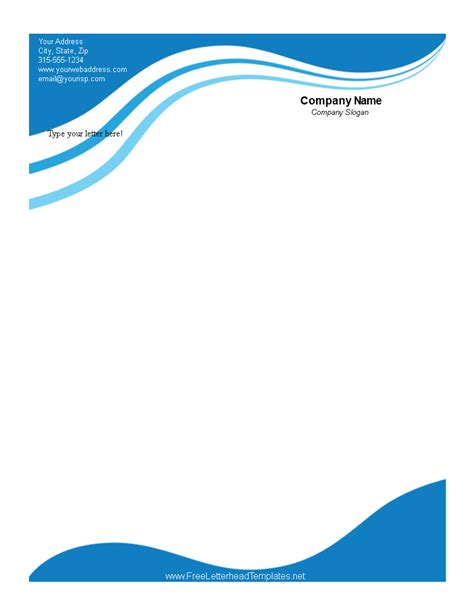Creating Professional Letterhead In Word

Letterhead is a crucial part of any business communication. It represents your brand and creates a lasting impression on your clients and partners. Creating a professional letterhead in Word is easy and cost-effective. In this article, we will guide you through the process of designing and customizing a letterhead that reflects your brand and enhances your credibility.
Why is Letterhead Important?
Letterhead is not just a piece of paper or a digital file. It’s an extension of your brand identity and a symbol of your professionalism. Here are some reasons why letterhead is important:
- It creates a strong first impression and establishes your credibility
- It reinforces your brand identity and makes your company more recognizable
- It adds a professional touch to your business communication
- It helps to differentiate your company from competitors
- It provides important contact information and legal details
Designing Your Letterhead
Step 1: Choose the Right Software
Microsoft Word is a popular and user-friendly software that can be used to design letterheads. Other software options include Adobe InDesign, Illustrator, and Photoshop. However, Word is the most accessible and cost-effective option for most businesses.
Step 2: Define Your Brand Identity
Before you start designing your letterhead, it’s important to define your brand identity. This includes your brand colors, typography, logo, and visual style. Your letterhead should reflect your brand identity and be consistent with your other marketing materials.
Step 3: Choose Your Layout and Elements
When designing your letterhead, consider the following elements:
- Company name and logo
- Address, phone number, and email
- Website and social media handles
- Tagline or slogan
- Design elements such as borders, patterns, or images
Step 4: Use Templates or Create Your Own
Microsoft Word offers pre-designed templates for letterheads that you can customize to fit your brand. You can also create your own template from scratch. When creating your template, consider the following:
- Page size and orientation
- Margins and spacing
- Header and footer design
- Logo and branding elements placement
Step 5: Add Text and Graphic Elements
Once you have your template, it’s time to add your text and graphic elements. Use your brand colors, fonts, and visual style to create a cohesive design. Make sure to include all the necessary contact information and legal details.
Customizing Your Letterhead
Step 1: Edit Your Template
After creating your letterhead, you can customize it by editing the template. This includes changing the colors, fonts, and design elements. You can also add or remove text and graphic elements as needed.
Step 2: Save and Use Your Letterhead
Once you have customized your letterhead, save it as a template or a document. You can then use it for all your business communication, such as letters, invoices, and proposals. Make sure to print your letterhead on high-quality paper for a professional look.
Frequently Asked Questions
What should I include in my letterhead?
Your letterhead should include your company name and logo, address, phone number, email, website, and social media handles. You can also include a tagline or slogan and design elements that reflect your brand identity.
Do I need to hire a designer to create my letterhead?
No, you can use Microsoft Word or other software to create your letterhead. However, if you want a more customized and professional look, you may consider hiring a designer.
Can I use a digital letterhead for my email communication?
Yes, you can use a digital letterhead for your email communication. Simply save your letterhead as a digital file and insert it into your email template.
Can I use my letterhead for other business materials?
Yes, you can use your letterhead for other business materials such as envelopes, business cards, and brochures. Make sure to use consistent branding elements across all your marketing materials.
How often should I update my letterhead?
You should update your letterhead whenever there are changes to your contact information or branding elements. It’s also a good idea to update your letterhead every few years to keep it fresh and relevant.
Conclusion
A professional letterhead is essential for any business communication. By following the steps outlined in this article, you can create a customized and professional-looking letterhead that reflects your brand identity and enhances your credibility. Remember to use consistent branding elements across all your marketing materials to create a strong and recognizable brand.
